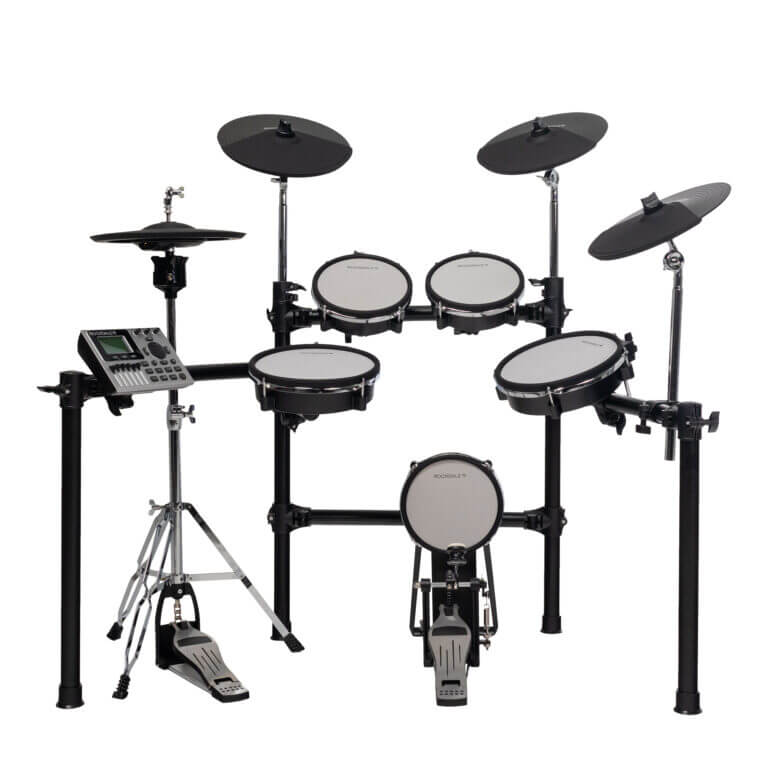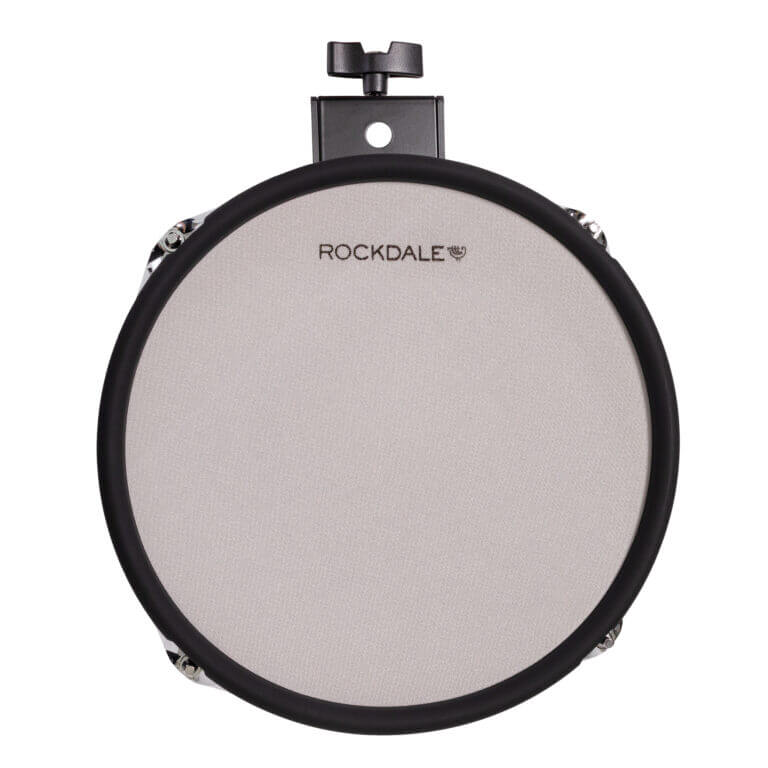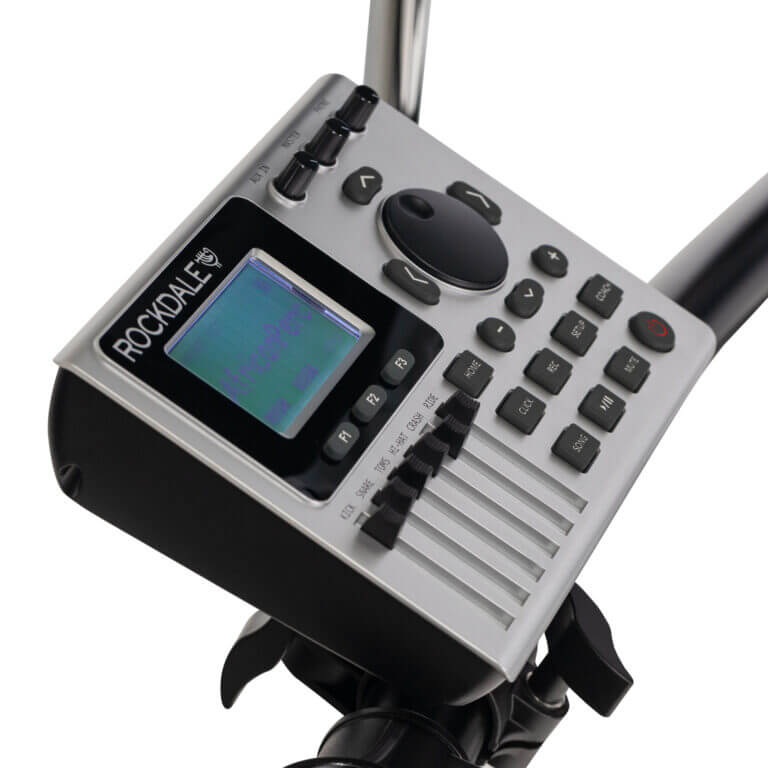The history of electronic drum kits
The history of electronic drum kits spans several decades and is closely linked to the development of electronics and sound recording technologies. Here’s a brief overview of this evolutionary process:
The first experiments with electronic drum kits began in the 1940s and 1950s. Drums were equipped with piezoelectric sensors that responded to hits and generated electrical signals.
In the 1970s, Linn Electronics released the first commercially successful electronic drum, the Linn LM-1 Drum Computer. This instrument gained popularity in the music industry for its ability to reproduce realistic drum sounds.
In the subsequent decades, new models of electronic drum kits emerged, offering a wider range of sounds and features.
In the late 1980s and 1990s, companies started producing electronic drum modules — separate units with electronics that could be used with various pads. This allowed musicians to create more flexible and customizable drum kits.
In the 2000s, with advancements in sound sampling and digital signal processing technologies, even more sophisticated electronic drum kits appeared. They provide extensive sound customization options and integration with computers and other devices.
Today, electronic drum kits offer outstanding possibilities for musicians. They can replicate not only classic drum sounds but also generate synthetic and special effects sounds. Many models come equipped with advanced features such as multi-channel recording, USB connectivity, built-in educational programs, and even the ability to upload custom sounds.

The modern drum kit is a synthesis of powerful sound, innovative technology, and expressive flexibility.
Electronic drum kits continue to evolve, and their popularity is growing thanks to the ability to create diverse sounds and flexibility in use across various musical styles. When choosing your first electronic drum kit, pay attention to the following aspects.
Key сomponents: Pads and Module
Electronic drum kits typically include various pads for drums, bass drum, cymbals, and hi-hat. Pads of electronic drum kits usually have specialized surfaces designed for effective strike detection and signal transmission to the electronic module. Different manufacturers may use different materials in their pads, but some of the most common include:
1. Rubber: Soft rubber surfaces commonly used for drum pads like the snare and hi-hat, simulating the feel of playing on acoustic drums.
2. Silicone: This material can be used to create more elastic and sensitive pads, allowing musicians to control the dynamics of the sound across a wide range.
3. Mesh Head: This material is often used for pads mimicking drumheads. Mesh heads provide a more realistic feel upon impact and allow musicians to adjust tension, similar to an acoustic drum.

Mesh pads provide an enhanced playing experience and a high degree of customization.
4. Trigger Systems: Some pads incorporate special sensors or triggers to register strikes. These systems can be built into various surface types, including rubber or mesh.
5. Plastic: Some pads may use plastic surfaces, providing durability and resilience.
6. Felt: Used to simulate the softness of drum surfaces, such as drumheads and cymbals.
7. Metal: Some cymbal pads may be made of metal to achieve a distinctive metallic sound.
It’s important to note that materials can vary depending on the type of pad (drum, cymbal, hi-hat, etc.) and the manufacturer. Pads from different manufacturers may use a combination of materials to achieve an optimal balance between playing feel, durability, and accurate signal transmission to the electronic module.
The electronic module is the brain of the system in an electronic drum kit. It processes signals from the pads, generates sound, and allows adjustment of various sound parameters.

The electronic module in a drum kit is a device that processes signals from pads, generates sound, and allows for the customization of sound parameters.
Here is a detailed description of the primary functions of the electronic module:
1. Signal processing:
• The electronic module receives electrical signals from the pads and other elements of the electronic drum kit, representing strikes on drums, cymbals, or other components.
2. Sound synthesis:
• One of the key functions of the module is sound synthesis. The module contains a library of sounds representing various types of drums and percussion instruments. By processing input signals, the module creates audio signals corresponding to the selected sounds.
3. Multilayered synthesis:
• Modern electronic modules typically support multilayered synthesis. This allows musicians to assign different sounds to different dynamic levels, providing a more natural and expressive sound based on the force of the strike.
4. Parameter adjustment:
• The module provides extensive options for adjusting sound parameters. This may include changing timbre, pitch, volume, reverb, attack, and other sound characteristics. These parameters enable musicians to tailor the sound to their preferences.
5. Effects and signal processing:
• Many modules include built-in effects such as chorus, flanger, equalizers, and others. This gives musicians the ability to add various sound effects to their performance.
6. Metronome and rhythmic functions:
• Electronic modules usually feature built-in metronomes and rhythmic functions. This is useful for practice and learning, allowing musicians to play at a specific tempo or use predefined rhythmic patterns.
7. Presets storage:
• The module often offers the ability to save and load presets, facilitating the switching between different sound configurations during performances or recordings.
8. Interface and connections:
• The module is typically equipped with various interfaces and ports, such as MIDI, USB, audio outputs, and inputs for connecting to other devices, computers, or audio interfaces.
The electronic module plays a pivotal role in the electronic drum kit, providing musicians with extensive control over sound and expression in their playing.
More points to consider
Here are some more points to consider when choosing your electronic drum kit.
1. Sound:
• Electronic drum kits offer a wide range of sounds, from realistic imitations of classic drums to synthetic and experimental tones.
• Many models allow musicians to upload their own sounds or use sounds from built-in libraries, expanding creative possibilities.
2. Parameter adjustment:
• Electronic drum kits typically provide extensive options for sound customization, including tone, pitch, volume, response, and other characteristics.
• This allows musicians to personalize the sound according to their preferences.
3. Portability and compactness:
• Many electronic drum kits are lightweight and compact, making them convenient for transportation and suitable for both stage and studio use.
4. Connectivity technologies:
• The presence of USB, MIDI, and audio outputs enhances the integration capabilities of electronic drum kits with computers, recording software, and other musical devices.
5. Educational features:
• Some models include educational programs and trainers, making electronic drum kits an attractive choice for beginner drummers.
6. Quiet playing and volume control:
• The ability to play with headphones allows for practice and performance without creating unnecessary noise, especially valuable in various scenarios.
7. Service and maintenance:
• It’s important to understand the service and tuning procedures for electronic drum kits, as well as be aware of warranty conditions and the availability of service centers. 
Researching different models will help you choose the option that best suits your musical needs and preferences.